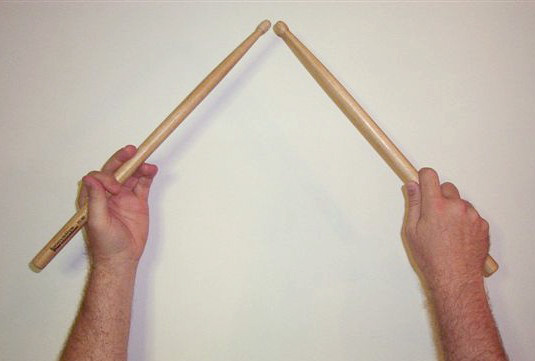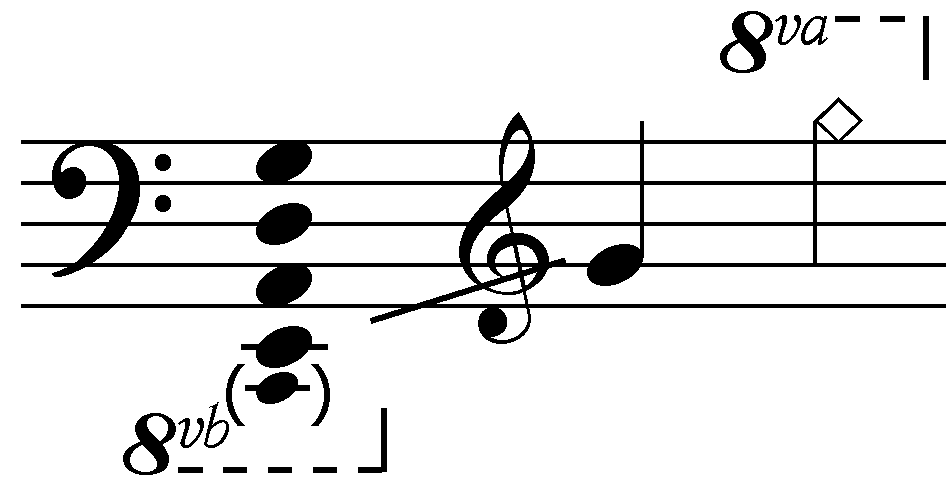|
Edge-ing
''Edge-ing'' is an album by American jazz saxophonist Oliver Lake recorded in 1993 for the Italian Black Saint label.Black Saint Records discography accessed July 7, 2011 Reception The Allmusic review awarded the album 4 stars.Allmusic Reviewaccessed July 7, 2011 Track listing :''All compositions by Oliver Lake except as indicated'' # "Edge-ing" - 9:08 # "Scene One" - 8:42 # "Shiffs" - 11:18 # "Peanut Butter" ([...More Info...] [...Related Items...] OR: [Wikipedia] [Google] [Baidu] |
Oliver Lake
Oliver Lake (born September 14, 1942) is an American jazz saxophonist, flutist, composer, poet, and visual artist. He is known mainly for alto saxophone, but he also performs on soprano and flute. During the 1960s, Lake worked with the Black Artists Group in St. Louis. In 1977, he founded the World Saxophone Quartet with David Murray, Julius Hemphill, and Hamiet Bluiett. He worked in the group Trio 3 with Reggie Workman and Andrew Cyrille. He has appeared on more than 80 albums as a bandleader, co-leader, and side musician. He is the father of drummer Gene Lake. Lake has been a resident of Montclair, New Jersey. '' |
Black Saint/Soul Note
Black Saint and Soul Note are two affiliated Italian independent record labels. Since their conception in the 1970s, they have released albums from a variety of influential jazz musicians, particularly in the genre of free jazz. History Black Saint was established in 1975 by Giacomo Pelliciotti and devoted to recording avant-garde musicians who might not have an opportunity elsewhere. In 1979, a sister label, Soul Note, was established as a home for artists who, while being no less creative, might be considered slightly closer to the mainstream. The labels specialize in avant-garde jazz stemming from the free jazz tradition. Some of its roster of artists were members of the Chicago-based music association Association for the Advancement of Creative Musicians and the St. Louis-based multidisciplinary arts collectives Black Artists Group and the Human Arts Ensemble. The company was based in Tribiano, Italy. Many of the recordings were made in Milan, as the performers passed th ... [...More Info...] [...Related Items...] OR: [Wikipedia] [Google] [Baidu] |
Virtual Reality (Total Escapism)
''Virtual Reality (Total Escapism)'' is an album by American jazz saxophonist Oliver Lake, which was recorded in 1991 and released on the Gazell label. Reception In his review for AllMusic, Scott Yanow states "Oliver Lake is heard throughout at the top of his game, making this both an easily recommended set for his fans and a perfect introduction to his dynamic music." '' The Penguin Guide to Jazz'' says "This was Lake's working quartet and perhaps the most pungent band he'd had for a decade.. A fine album." Track listing All compositions by Oliver Lake except where noted. # "Jesus Christ" (Curtis Clark) – 4:46 # " Fables of Faubus" (Charles Mingus) – 8:29 # "The Prophet" (Eric Dolphy) – 8:39 # "Shedetude" (Bobby Bradford) – 5:20 # "Pop a Wheelie" – 8:54 # "Handful of Fives" ( Roland Kirk) – 9:40 # "Virtual Reality (Total Escapism)" – 7:03 # "Jest a Little" – 8:00 Personnel * Oliver Lake – alto saxophone, soprano saxophone *Anthony Peterson – guitar ... [...More Info...] [...Related Items...] OR: [Wikipedia] [Google] [Baidu] |
Dedicated To Dolphy
''Dedicated to Dolphy'' is an album by the American jazz saxophonist Oliver Lake, recorded in 1994 for the Italian Black Saint label.Black Saint Records discography accessed July 7, 2011 The album is Lake's second tribute to multi-instrumentalist following '''' (1984). Reception The review by Ken Dryden described the album as: "A ...[...More Info...] [...Related Items...] OR: [Wikipedia] [Google] [Baidu] |
Andrew Cyrille
Andrew Charles Cyrille (born November 10, 1939) is an American avant-garde jazz drummer. Throughout his career, he has performed both as a leader and a sideman in the bands of Walt Dickerson and Cecil Taylor, among others. AllMusic biographer Chris Kelsey wrote: "Few free-jazz drummers play with a tenth of Cyrille's grace and authority. His energy is unflagging, his power absolute, tempered only by an ever-present sense of propriety." Life and career Cyrille was born in Brooklyn, New York, United States, into a Haitian family. He began studying science at St. John's University, but was already playing jazz in the evenings and switched his studies to the Juilliard School. His first drum teachers were fellow Brooklyn-based drummers Willie Jones and Lenny McBrowne; through them, Cyrille met Max Roach. Nonetheless, Cyrille became a disciple of Philly Joe Jones. His first professional engagement was as an accompanist of singer Nellie Lutcher, and he had an early recording ses ... [...More Info...] [...Related Items...] OR: [Wikipedia] [Google] [Baidu] |
Reggie Workman
Reginald "Reggie" Workman (born June 26, 1937 in Philadelphia, Pennsylvania) is an American avant-garde jazz and hard bop double bassist, recognized for his work with both John Coltrane and Art Blakey. Career Early in his career, Workman worked in jazz groups led by Gigi Gryce, Donald Byrd, Duke Jordan and Booker Little. In 1961, Workman joined the John Coltrane Quartet, replacing Steve Davis. He was present for the saxophonist's ''Live at the Village Vanguard'' sessions, and also recorded with a second bassist (Art Davis) on the 1961 album, '' Olé Coltrane''. Workman left Coltrane's group at the end of the year, following a European tour. In 1962, Workman joined Art Blakey's Jazz Messengers (replacing long-time Blakey bassist Jymie Merritt), and worked alongside Freddie Hubbard, Wayne Shorter, and Cedar Walton for most of his time in the Jazz Messengers. Workman left Blakey's group in 1964. Workman also played with James Moody, Yusef Lateef, Pharoah Sanders, Herbie ... [...More Info...] [...Related Items...] OR: [Wikipedia] [Google] [Baidu] |
Piano
The piano is a stringed keyboard instrument in which the strings are struck by wooden hammers that are coated with a softer material (modern hammers are covered with dense wool felt; some early pianos used leather). It is played using a musical keyboard, keyboard, which is a row of keys (small levers) that the performer presses down or strikes with the fingers and thumbs of both hands to cause the hammers to strike the strings. It was invented in Italy by Bartolomeo Cristofori around the year 1700. Description The word "piano" is a shortened form of ''pianoforte'', the Italian term for the early 1700s versions of the instrument, which in turn derives from ''clavicembalo col piano e forte'' (key cimbalom with quiet and loud)Pollens (1995, 238) and ''fortepiano''. The Italian musical terms ''piano'' and ''forte'' indicate "soft" and "loud" respectively, in this context referring to the variations in volume (i.e., loudness) produced in response to a pianist's touch or pressure on ... [...More Info...] [...Related Items...] OR: [Wikipedia] [Google] [Baidu] |
Black Saint/Soul Note Albums
Black is a color which results from the absence or complete absorption of visible light. It is an achromatic color, without hue, like white and grey. It is often used symbolically or figuratively to represent darkness. Black and white have often been used to describe opposites such as good and evil, the Dark Ages versus Age of Enlightenment, and night versus day. Since the Middle Ages, black has been the symbolic color of solemnity and authority, and for this reason it is still commonly worn by judges and magistrates. Black was one of the first colors used by artists in Neolithic cave paintings. It was used in ancient Egypt and Greece as the color of the underworld. In the Roman Empire, it became the color of mourning, and over the centuries it was frequently associated with death, evil, witches, and magic. In the 14th century, it was worn by royalty, clergy, judges, and government officials in much of Europe. It became the color worn by English romantic poets, businessmen ... [...More Info...] [...Related Items...] OR: [Wikipedia] [Google] [Baidu] |
Drum Kit
A drum kit (also called a drum set, trap set, or simply drums) is a collection of drums, cymbals, and other auxiliary percussion instruments set up to be played by one person. The player (drummer) typically holds a pair of matching drumsticks, one in each hand, and uses their feet to operate a foot-controlled hi-hat and bass drum pedal. A standard kit may contain: * A snare drum, mounted on a stand * A bass drum, played with a beater moved by a foot-operated pedal * One or more tom-toms, including rack toms and/or floor toms * One or more cymbals, including a ride cymbal and crash cymbal * Hi-hat cymbals, a pair of cymbals that can be manipulated by a foot-operated pedal The drum kit is a part of the standard rhythm section and is used in many types of popular and traditional music styles, ranging from rock and pop to blues and jazz. __TOC__ History Early development Before the development of the drum set, drums and cymbals used in military and orchestral mu ... [...More Info...] [...Related Items...] OR: [Wikipedia] [Google] [Baidu] |
Double Bass
The double bass (), also known simply as the bass () (or #Terminology, by other names), is the largest and lowest-pitched Bow (music), bowed (or plucked) string instrument in the modern orchestra, symphony orchestra (excluding unorthodox additions such as the octobass). Similar in structure to the cello, it has four, although occasionally five, strings. The bass is a standard member of the orchestra's string section, along with violins, viola, and cello, ''The Orchestra: A User's Manual'' , Andrew Hugill with the Philharmonia Orchestra as well as the concert band, and is featured in Double bass concerto, concertos, solo, and chamber music in European classical music, Western classical music.Alfred Planyavsky [...More Info...] [...Related Items...] OR: [Wikipedia] [Google] [Baidu] |
John Hicks (jazz Pianist)
John Josephus Hicks Jr. (December 21, 1941 – May 10, 2006) was an American jazz pianist, composer, and arranger. He was leader of more than 30 recordings and played as a sideman on more than 300."Artist of the Month: John Hicks" . wicn.org. Retrieved November 20, 2016. After early experiences backing blues musicians, Hicks moved to New York in 1963. He was part of 's band for two years, accompanied vocalist from 1965 to 1967, before joining |
Alto Saxophone
The alto saxophone is a member of the saxophone family of woodwind instruments. Saxophones were invented by Belgian instrument designer Adolphe Sax in the 1840s and patented in 1846. The alto saxophone is pitched in E, smaller than the B tenor but larger than the B soprano. It is the most common saxophone and is used in popular music, concert bands, chamber music, solo repertoire, military bands, marching bands, pep bands, and jazz (such as big bands, jazz combos, swing music). The alto saxophone had a prominent role in the development of jazz. Influential jazz musicians who made significant contributions include Don Redman, Jimmy Dorsey, Johnny Hodges, Benny Carter, Charlie Parker, Sonny Stitt, Lee Konitz, Jackie McLean, Phil Woods, Art Pepper, Paul Desmond, and Cannonball Adderley. Although the role of the alto saxophone in classical music has been limited, influential performers include Marcel Mule, Sigurd Raschèr, Jean-Marie Londeix, Eugene Roussea ... [...More Info...] [...Related Items...] OR: [Wikipedia] [Google] [Baidu] |





